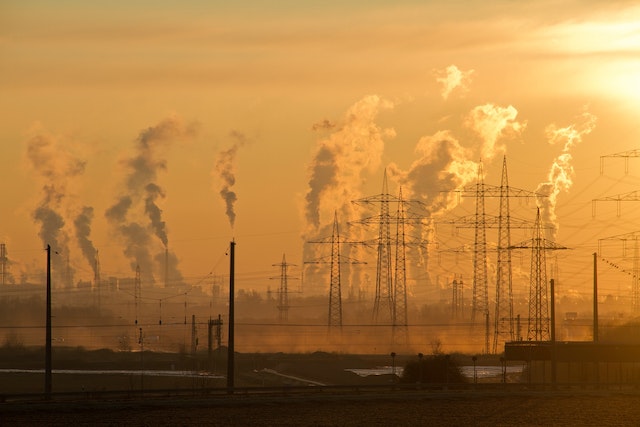Cracking the Code: New Insights into Dinosaur Extinction by Volcanic Activity
Greetings, fellow seekers of knowledge! I am [Author’s Name], a dedicated explorer of the prehistoric past and an enthusiastic dissector of its mysteries. Today, in collaboration with the eminent Roy Chapman Andrews, a pioneer in the field of paleontology, we embark on an extraordinary journey to unravel the enigma surrounding the demise of the mighty dinosaurs. Our focus will be on the intriguing connection between volcanic activity and this epoch-altering event. Get ready to journey through time, as we delve into new revelations that may hold the key to understanding this ancient catastrophe.
The Dinosaurs’ Final Hour: An Overview of Extinction Theories
The extinction of dinosaurs, which occurred around 65 million years ago, is a topic that has perplexed scientists for decades. Various theories attempt to explain this cataclysmic event, which wiped out nearly three-quarters of Earth’s plant and animal species. Among these theories are:
- Asteroid Impact: One of the most prominent theories suggests a colossal asteroid impact, like the Chicxulub event, triggered massive fires, climate disruption, and darkness due to debris, causing the mass extinction.
- Climate Change: Gradual climate change, driven by factors such as sea-level fluctuations, changing land masses, or variations in Earth’s orbit, is believed to have made survival increasingly challenging for dinosaurs.
- Volcanic Activity: Recent studies propose that extensive volcanic activity, particularly the eruptions of the Deccan Traps in present-day India, led to severe climate disturbances, acid rain, and a “volcanic winter” that played a role in the extinction event.
In this article, we will delve into the volcanic activity theory, seeking to understand how Earth’s violent geological phenomena might have played a pivotal role in the sudden and devastating extinction of the magnificent dinosaurs.

Roy Chapman Andrews Speaks: Volcanoes and Dinosaur Demise
Roy Chapman Andrews, a luminary in the field of paleontology, has spent a lifetime studying the Earth’s ancient past. His deep-rooted knowledge and extensive research into the demise of the dinosaurs have revealed a fascinating connection to volcanic activity. Andrews hypothesizes that the Earth’s geological fury, specifically volcanic eruptions on a massive scale, might have substantially contributed to the end of the Mesozoic Era.
According to Andrews, the Deccan Traps volcanic eruptions, which spewed massive amounts of lava and gas over thousands of years, likely played a significant role in altering the Earth’s climate. The resultant gases, including sulfur dioxide and carbon dioxide, would have led to a “volcanic winter” effect, causing a drastic drop in global temperatures. This environmental upheaval would have severely impacted ecosystems and, consequently, the dinosaurs’ ability to survive.
Volcanic Eruptions and Their Global Impact
Volcanic eruptions are powerful geological events that can have substantial global consequences. The impact of a volcanic eruption extends far beyond the immediate vicinity of the volcano. The expulsion of volcanic gases, ash, and particles can reach the upper atmosphere and even enter the stratosphere, where they disperse widely.
Key consequences of volcanic eruptions include:
- Climate Effects: Volcanic gases can trigger climate changes by altering the composition of the atmosphere. Sulfur dioxide, for instance, can lead to the formation of sulfuric acid aerosols, contributing to a cooling effect on the planet.
- Environmental Disruption: Ash clouds can block sunlight, affecting photosynthesis and disrupting ecosystems. Acid rain, a byproduct of volcanic activity, can contaminate water sources and soil.
The Volcanic Connection: Evidence from the Past
Geological records provide compelling evidence supporting the correlation between volcanic activity and mass extinctions. Examining the Earth’s past reveals instances where major volcanic eruptions align with extinction events, suggesting a causal relationship. The most notable example is the Permian-Triassic Extinction, where the eruption of the Siberian Traps is believed to have been a significant factor in the Earth’s largest known mass extinction event.
In the case of the Deccan Traps in India, dating aligns with the end-Cretaceous period when the dinosaur extinction occurred. The vast amounts of lava and gases released during this volcanic event could have caused a substantial disruption in global climate, leading to the collapse of ecosystems and the extinction of numerous species, including the awe-inspiring dinosaurs.
Nature’s Wrath: How Volcanic Activity Altered the Environment
Volcanic activity alters the environment in profound ways, showcasing the incredible power of Earth’s geology. These alterations can include:
- Climate Shifts: Volcanic aerosols and gases in the atmosphere can reflect sunlight back into space, leading to a temporary cooling effect known as a volcanic winter. Conversely, volcanic gases like CO2 can contribute to long-term warming due to the greenhouse effect.
- Soil and Water Contamination: Ash and other volcanic debris can contaminate soil and water sources, making them inhospitable for many forms of life.
- Ecosystem Disruption: The abrupt changes in climate and availability of resources can severely disrupt ecosystems, leading to the decline and extinction of various species.
Revealing the Past: Modern Techniques in Paleontological Research
Modern paleontological research leverages advanced techniques to study ancient volcanic events and their effects on prehistoric life. Technologies like radiometric dating allow scientists to precisely determine the timing of volcanic eruptions relative to extinction events. Additionally, sophisticated climate models help simulate the environmental consequences of volcanic activity, aiding in understanding their potential impact on the Earth’s past and present.
By integrating various scientific disciplines, researchers can reconstruct a more comprehensive picture of the Earth’s history and the factors that shaped its biodiversity, including the cataclysmic events that led to the extinction of the majestic dinosaurs.
In conclusion,
while the extinction of the dinosaurs remains an enigma with multiple theories vying for attention, the volcanic activity theory offers a compelling perspective. The immense power of volcanoes to shape the Earth’s climate and disrupt ecosystems cannot be underestimated. By exploring this hypothesis and understanding the Earth’s geological past, we inch closer to unraveling the mysteries of a bygone era.
Let us continue our quest for knowledge, delving deeper into the ancient secrets that have shaped our world. As we journey through time, may we glean insights that enrich our understanding of the Earth’s magnificent history and the marvels of prehistoric life. The ancient mysteries await our exploration, and with each revelation, we come closer to comprehending the wonders of our prehistoric past. Onward, fellow seekers of knowledge!










